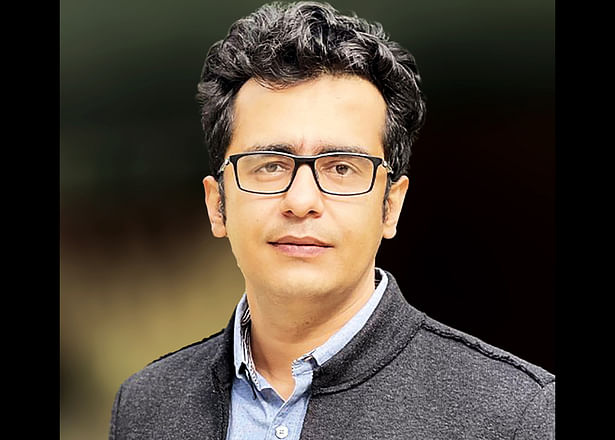
University Park, PA

UNIVERSITY PARK, Pa. — Farzad Hashemi, who graduated from Penn State in 2023 with a doctorate in architecture, was recently named the recipient of the Architectural Research Centers Consortium (ARCC) Dissertation Award. He is the second recipient of the prestigious research award in as many years from the College of Arts and Architecture’s Stuckeman School, with Elena Vazquez, a 2022 architecture doctorate alumna, earning the prize last year.
The ARCC is an international association of architectural research centers, academies and organizations committed to the research culture and supporting infrastructure of architecture and related design disciplines. The ARCC board presents the dissertation award annually to honor significant new research in architecture and environmental design and to recognize the achievement of an emerging scholar.
“We found [Hashemi’s] research problem to be well-defined. The abstract is clear and succinct, and the overall dissertation has a clear structure, problem definition and writing,” the ARCC board reported. “We noted that the work uses a multi-method research design, quantifiable modeling, analysis and simulation.”
In his dissertation, titled “Novel Parametric Workflow for Simulating Urban Heat Island (UHI) Effects on Building Energy Performance: A Case Study of Seven U.S. Cities,” Hashemi developed a novel methodology that couples the Local Climate Zones classification system with the Urban Weather Generator tool to produce urban-specific climate data. According to Hashemi, the methodology was crafted to address the inadequacies of typical meteorological year data, which is predominantly gathered from open spaces such as airports and typically misses the unique climate conditions of urban areas.
“Utilizing this methodology, I generated a series of urban-centric climate data for seven U.S. cities, each located in a distinct climate zone," he said. "This modified data was applied in energy simulations for commercial and residential building prototypes provided by the International Energy Conservation Code, offering a detailed evaluation of how the UHI effect influences energy consumption in buildings.”
By offering a more accurate representation of urban climates, Hashemi said his methodology can enhance the precision of building energy models and can lead to more effective strategies for energy conservation and climate resilience in urban planning and architecture. It can also aid in the development of more accurate climate action plans by providing data that better reflects the thermal environment of urban areas, which may contribute to more sustainable urban development.
“This approach can inform architects, building engineers and researchers about the importance of incorporating localized climate data in the planning and retrofitting of urban spaces to mitigate the UHI effect, enhance living conditions and reduce energy consumption,” Hashemi said.
Hashemi said it was “an immense honor” to have received the ARCC Dissertation Award.
“[The award] acknowledges not only the innovative aspect of my research but also its critical role in steering the development of urban environments towards greater resilience and sustainability," he said. “Through enhancing our approach to modeling urban climates, we are setting the stage for more precise building energy simulations. These are essential for creating cities capable of meeting the demands posed by climate change and urban growth.”
Originally from Iran, Hashemi was a researcher in the Hamer Center for Community Design for five years during his time in the Stuckeman School at Penn State. He is now an assistant professor of architecture and an affiliate assistant professor of mechanical engineering at the University of Texas, San Antonio, Klesse College of Engineering and Integrated Design.
He holds a master of science in architecture from Iowa State University, a master of architecture from Politecnico di Milano University, Italy, and a bachelor of architecture from Shahid Bahonar University of Kemran, Iran.
No Comments
Block this user
Are you sure you want to block this user and hide all related comments throughout the site?
Archinect
This is your first comment on Archinect. Your comment will be visible once approved.